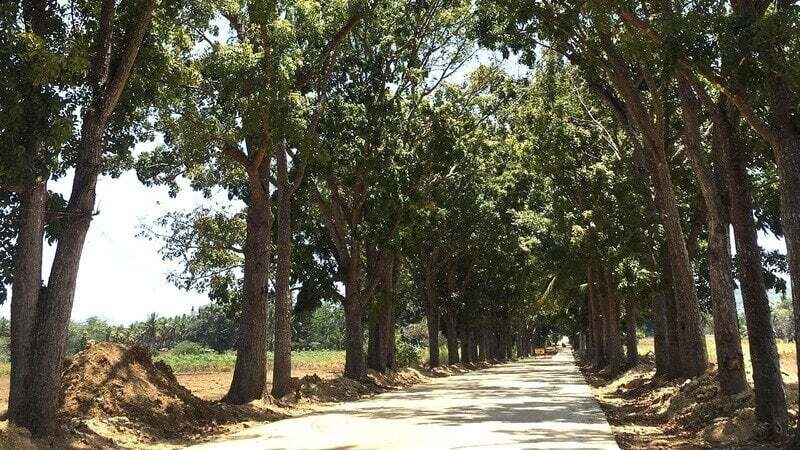Poro parish church urges gov’t: Don’t chop down our trees

Photo courtesy of Fr. Joel Bonza
CEBU CITY, Philippines – A parish church in Poro, Camotes Island in northern Cebu wants to save dozens of decades-old trees that stand in the way of road widening projects there.
The Sto. Niño de Poro Parish launched an online petition to convince the government to reconsider their decision to cut down over 500 trees for road widening efforts.
The trees covered at least five barangays, said Fr. Joel Bonza of the Sto. Niño de Poro Parish. These are the villages of Mercedes, Esperanza, Adela, San Jose, and Daan Paz.
READ: Carcar City’s century-old trees slowly regaining beauty
Bonza told CDN Digital in an interview that they aimed to gather 1,000 online signatures for the petition which they opened last April 10.
Aside from Bonza, the authors of the online petition included Marieta Gorgonio, Zandro Zurita, Jasmine Villanueva, Vigilia Argallon, Carlotina Santic, and Nathalie Jane Rosauro.
READ: No one stops cutting of century-old trees in Naga City this time
Centuries-old trees
“Trees are indispensable for our ecosystem…We need sustainable, well balance environment not just in the name of economic progress at the expense of the environment,” portions of the online petition read.
The church has also initiated a public hearing, slated this April 27 to discuss the issue. They invited all stakeholders – including concerned national government agencies, the local government of Poro, and barangay officials – to the activity.
CDN Digital has reached out to the local government unit of Poro for their comments but has yet to receive a response as of this writing.
READ: Are century-old trees in Cebu worth keeping?
The Roman Catholic community in Poro only learned about the plans to chop down trees to make way for road widening efforts there last January.
The Municipality’s Environment and Natural Resources Office (Menro) also confirmed to them the information they received from concerned parishioners.
“We told the Menro that we were against it since this is our advocacy in the parish… We are alarmed when the DENR marked red numbers on the 500+ trees,” said Bonza.
Some of the trees subjected to be torn down included centuries-old ones like lomboy, acacia and bangkal, the parish priest added.
Signature campaign
To stop the cutting down of trees, the church collected signatures from residents, expressing their opposition to it last March.
But they decided to spread the word on the internet in the hopes of amplifying their cause, Bonza shared.
“We are the citizens of this planet. We must listen to the Cry of the Earth pleading our synodal mercy. We must not listen only to our own and economical voice. We go beyond from ego to eco. Let justice and peace flow,” he added.
Poro is a fourth-class municipality that forms part of the Camotes group of islands, located approximately 200 kilometers northeast of Cebu City.
Disclaimer: The comments uploaded on this site do not necessarily represent or reflect the views of management and owner of Cebudailynews. We reserve the right to exclude comments that we deem to be inconsistent with our editorial standards.
